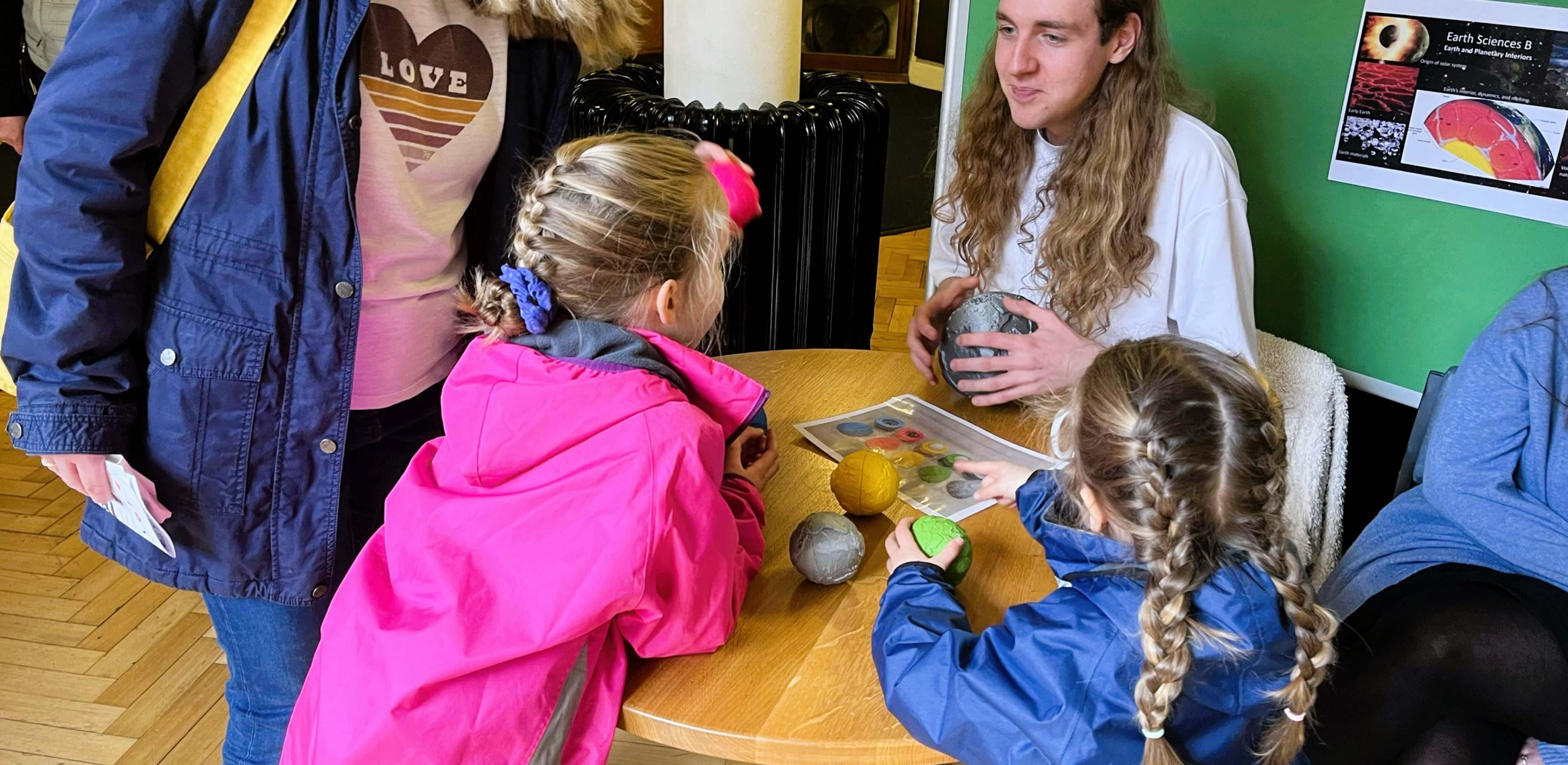
Submitted by Dr C.M. Martin-Jones on Mon, 25/03/2024 - 11:12
On Saturday 23rd March, the Department of Earth Sciences and Sedgwick Museum hosted their first Earth Sciences Fair as part of the wider Cambridge Festival.
Visitors had a chance to meet scientists from the Department and hear about their research to understand our planet and tackle environmental challenges. Interactive activities on wide-ranging themes included: design your own coral reef, create your own earthquake, guess the bird song game and more.
Scientists and activities at the Earth Sciences Fair
Spot the Meteorite!
Dr Elsa Amsellem, from the Department of Earth Sciences, showed visitors how to distinguish extra-terrestrial rocks from terrestrial rocks, and gave a whistle-stop tour of the journey these meteorites have been on.
In her research, Elsa studies meteorites and old terrestrial rocks to understand the formation and evolution of our planet.
Artifical Intelligence for Environmental Risk, the ‘AI4ER’ team
Postgraduate students from the Artificial Intelligence for Environmental Risk or ‘AI-4ER’ doctoral training programme, hosted by the Department of Earth Sciences, ran activities on a range of climate science themes.
Activities included: explore the interactive Cambridge tree map, take a virtual dive into a coral reef, play the AI bird song game and protect coastal cities from flooding.
Build a mountain range
Visitors got a chance to make their own mountain using layers of coloured sand and then see how the tectonic forces involved in this process operate over a global scale.
Exploring Earth’s interior using soundwaves
Kiki Bordean, a recent Natural Sciences graduate from Cambridge, and Sam Robertson, History undergraduate at The University of Essex, explained the science of sound and seismic waves with interactive activities. Kiki and Sam work in the collections team of the Sedgwick Museum.
What’s inside the Earth?
Visitors experienced what it's like to be a seismologist and use vibrations inside the Earth to see deep into our planet’s interior.
Dr Lisanne Jagt and James Atkins, Deep Earth Seismologists in the Department of Earth Sciences, ran the event. Lisanne and James investigate 1000 km-wide pancake-like structures on the core-mantle boundary. To do this, they use earthquake waves that travel to the deepest parts of the Earth's mantle.
Investigating the Earth’s Crust
In this activity, visitors met Tim Owen, Senior Technical Officer in the Department of Earth Sciences from 1966-2001, and Mel Mason, Electronics Technician in the Department at the same time. Tim and Mel invented innovative instruments that contributed to the paradigm shift in our knowledge of Earth’s crust; what it is made up of and how thick it is at different locations.
The world of teeny tiny nanomaterials
Dr Christina Boukouvala, who works with Prof. Emilie Ringe from the Departments of Earth Sciences and Materials Science and Metallurgy, welcomed visitors into the microscopic world of nanomaterials: tiny metal particles that have strange and useful properties, including their ability to heat up when light is shone on them.
Read more about Cambridge Festival events here.

